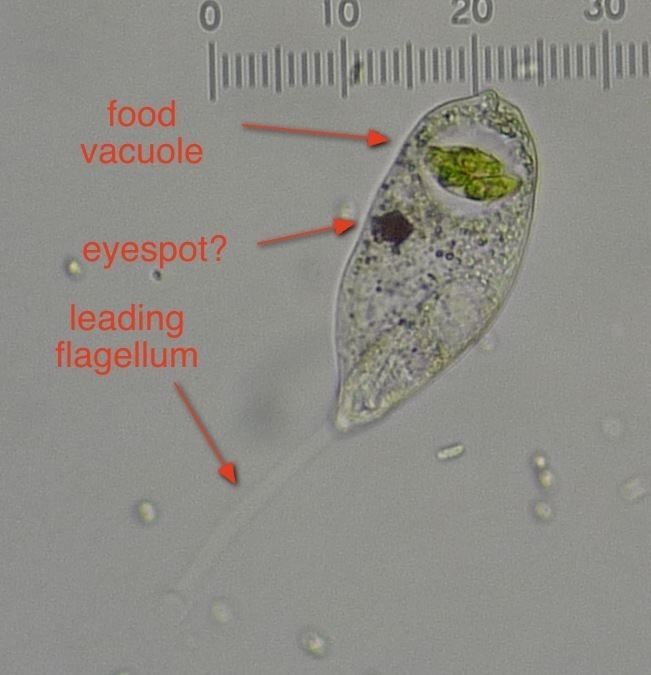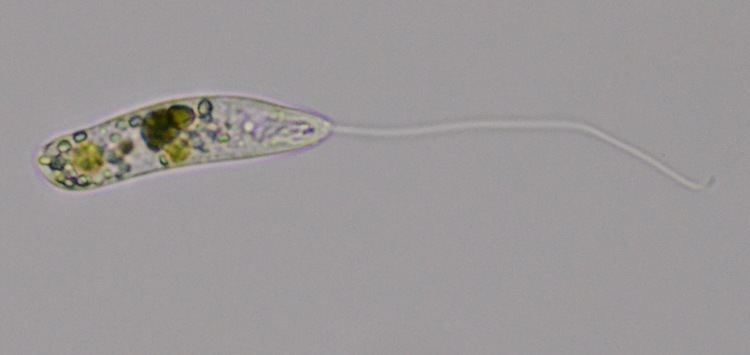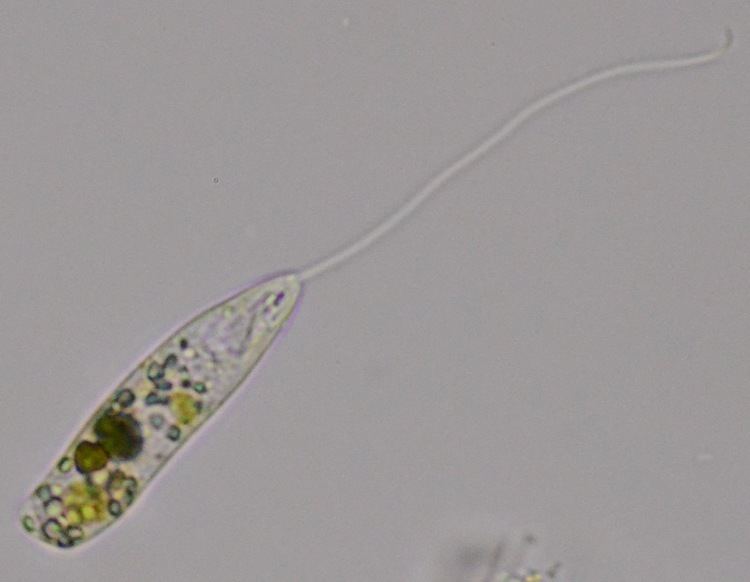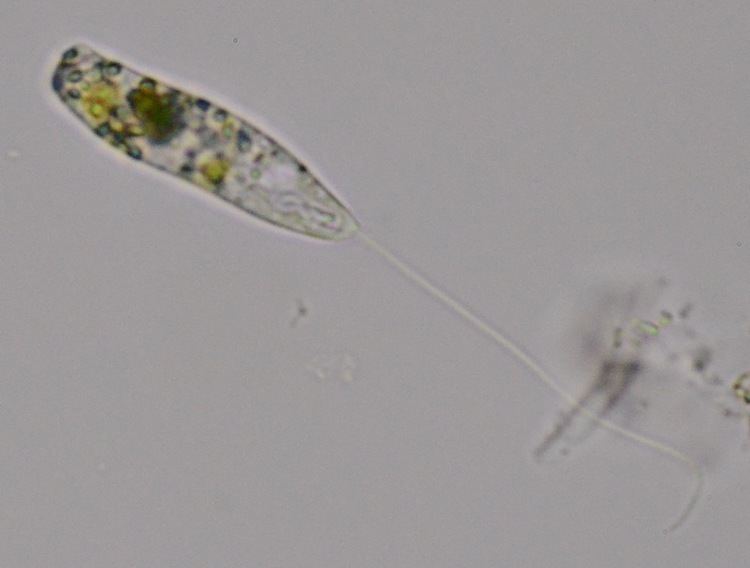Domain Eukaryota Phylum Euglenophyta Rank Order | Scientific name Euglenida Higher classification Euglenophyceae | |
 | ||
Similar Euglena, Dinoflagellate, Green algae, Euglenozoa, Golden algae | ||
Euglenids (euglenoids, or euglenophytes, formally Euglenida, ICZN, or Euglenophyceae, ICBN) are one of the best-known groups of flagellates, which are Excavate Eukaryotes of the phylum Euglenophyta and their cell structure is typical of that group. They are commonly found in freshwater, especially when it is rich in organic materials, with a few marine, and endosymbiotic members. Most euglenids are unicellular. Many euglenids have chloroplasts and produce their own food through photosynthesis, but others feed by phagocytosis, or strictly by diffusion. This group is known to contain carbohydrate paramylon.
Contents
- Structure and locomotion
- History and classifications
- Classification and nutrition
- Osmotrophic euglenoids
- References

Euglenoids are said to descend from an ancestor that took up green algae by secondary endosymbiosis.
Structure and locomotion

Euglenoids are distinguished mainly by the presence of a pellicle (periplast), which is composed of proteinaceous strips underneath the cell membrane, supported by dorsal and ventral microtubules. This varies from rigid to flexible, and gives the cell its shape, often giving it distinctive striations. In many euglenids the strips can slide past one another, causing an inching motion called metaboly. Otherwise they move using the flagella.
History and classifications

The euglenoids were first defined by Otto Bütschli in 1884 as the flagellate order Euglenida, as an animal. Botanists subsequently created the algal division Euglenophyta; thus they were classified as both animals and plants, as they share characteristics with both. This conflict is an example of why the kingdom Protista was adopted. However, they retained their double-placement until the flagellates were split up, and both names are still used to refer to the group. Their chlorophyll are not masked with accessory pigments.
Classification and nutrition

The classification of euglenoids is not a viable resource, as groups are being revised to conform with their molecular phylogeny. To some extent, however, the results support the traditional groups based on differences in nutrition and number of flagella; at any rate these provide a starting point for considering euglenid diversity.

As with other Euglenozoa, the primitive mode of nutrition is phagocytosis. Prey such as bacteria and smaller flagellates are ingested through a cytostome, supported by microtubules. These are often packed together to form two or more rods, which function in ingestion, and in Entosiphon form an extendable siphon. Most phagotrophic euglenids have two flagella, one leading and one trailing. The latter is used for gliding along the substrate. In some, such as Peranema, the leading flagellum is rigid and beats only at its tip.
Osmotrophic euglenoids

A prolonged absence of light or exposure to harmful chemicals may cause atrophy and absorption of the chloroplasts without otherwise harming the organism. There are a number of species where a chloroplast's absence was formerly marked with separate genera such as Astasia (colourless Euglena) and Hyalophacus (colourless Phacus). Since they lack a developed cytostome, these forms feed exclusively by absorption.
